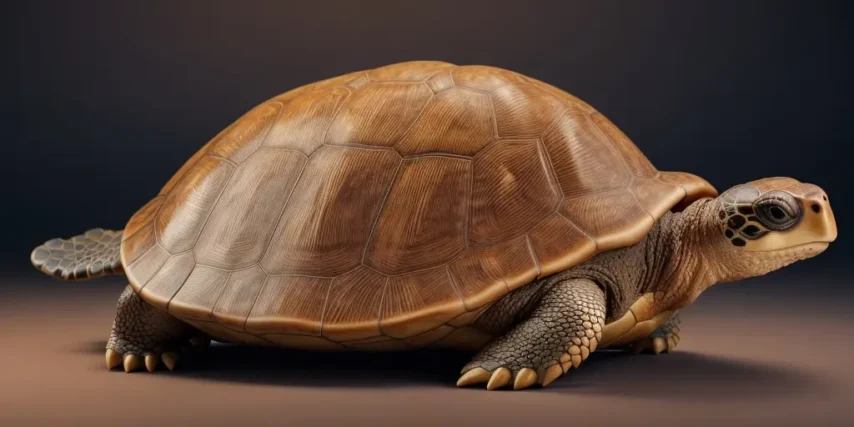The Impenetrable Fortress: Unveiling the Remarkable Strength of a Turtle’s Shell
The world of reptiles harbors an extraordinary diversity of species, each equipped with unique adaptations that have allowed them to thrive in various environments. Among these fascinating creatures, turtles stand out not only for their slow and steady demeanor but also for the incredible strength of their most iconic feature – their shell. In this exploration, we delve into the anatomy, composition, and evolutionary significance of a turtle’s shell, uncovering the secrets that make it a formidable fortress in the animal kingdom.
Anatomy of a Turtle’s Shell:
A turtle’s shell is a marvel of natural engineering, serving as both a protective shield and an integral part of its skeletal structure. The shell is composed of two main parts: the carapace, which covers the turtle’s back, and the plastron, the ventral portion that shields the belly. These two components are fused together, creating a solid, bony structure that encases much of the turtle’s body.
The carapace is formed by the fusion of the turtle’s vertebrae and ribs, while the plastron originates from the fusion of the turtle’s clavicles and gastralia. This fusion results in a rigid shell that provides exceptional protection against predators and environmental hazards. Interestingly, the outer layer of the shell, known as scutes, is made of keratin, the same protein found in human hair and nails, adding an extra layer of durability.

Adaptations for Defense:
The strength of a turtle’s shell is not solely attributed to its hard, bony composition. Turtles have evolved a range of adaptations that enhance the effectiveness of their armor. One such adaptation is the ability to retract their limbs and head into the shell, creating an impenetrable barrier against potential threats.
Additionally, many turtle species possess specialized mechanisms for reinforcing their defense. Some have hinged plastrons that allow for a tight closure, creating a secure seal that protects vulnerable underparts. Others have evolved unique shapes and patterns on their shells, providing camouflage that helps them blend seamlessly into their surroundings, further reducing the likelihood of detection by predators.
Evolutionary Significance:
The evolution of the turtle’s shell is a captivating story of survival and adaptation. Fossils reveal that early turtles had a more flexible shell, resembling a halfway point between their modern form and that of their reptilian relatives. Over millions of years, selective pressures favored the development of a more rigid shell, offering unparalleled protection and increasing their chances of survival.
The ability to withdraw into the shell and withstand external pressures provided a significant advantage in the face of predators. This adaptive trait allowed turtles to explore a variety of habitats, from terrestrial to aquatic environments, establishing them as resilient and versatile members of the reptilian order.
Beyond Defense: The Versatility of the Turtle’s Shell:
While the primary function of a turtle’s shell is defense, it serves other vital purposes as well. The shell acts as a temperature-regulating device, allowing turtles to bask in the sun to raise their body temperature or retreat into the shade to cool down. Additionally, the shell plays a crucial role in buoyancy for aquatic turtles, aiding in their ability to navigate and thrive in aquatic environments.

Conservation Challenges and Threats:
Despite the remarkable strength and adaptability of turtle shells, these incredible reptiles face numerous threats in the modern world. Habitat loss, pollution, climate change, and poaching are significant challenges that jeopardize turtle populations globally. Conservation efforts are essential to ensure the survival of these ancient creatures and to maintain the delicate balance they bring to ecosystems.

Conclusion:
In the intricate tapestry of the natural world, the turtle’s shell stands out as a testament to the power of evolution. Its strength and versatility have allowed turtles to endure for millions of years, adapting to changing environments and outsmarting predators. Understanding the anatomy and evolutionary significance of a turtle’s shell not only deepens our appreciation for these remarkable reptiles but also underscores the importance of conservation efforts to protect their habitats and ensure their continued existence on our planet.







